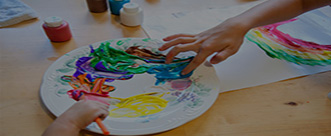Treatments
Comprehensive Skills Assessment
Children with developmental disabilities come with multiple skill deficits. These deficits could be in speech, sensory, gross motor skills, fine motor skills, adaptive skills, executive functioning, cognition, behavioral adaptation, receptive language and expressive language, academics, visual performance, dressing, grooming and communication. Our comprehensive skills assessment will assess all the above-mentioned domains to come up with the best treatment for the child.
The BCBA (Board Certified Behavior Analyst), Occupational Therapist and Speech/Language Pathologist will administer these comprehensive assessments maintain the quality to ensure our customers trust.
ABA Therapy
Applied Behavior Analysis (ABA) therapy is an evidence based therapy and science of changing behavior. ABA therapy has many years of research and evidence behind it. Behavior analysis focuses on the principles that explain how learning takes place. Positive reinforcement is one such principle. When a behavior is followed by some sort of reward, the behavior is more likely to be repeated. Through decades of research, the field of behavior analysis has developed many techniques for increasing useful behaviors and reducing those that may cause harm or interfere with learning.
Applied behavior analysis (ABA) is the use of these techniques and principles to bring about meaningful and positive change in behavior.
As mentioned, behavior analysts began working with young children with autism and related disorders in the 1960s. A wide variety of ABA techniques have been developed for building useful skills in learners with autism – from toddlers through adulthood.
These techniques can be used in structured situations such as a classroom lesson as well as in “everyday” situations such as family dinnertime or the neighborhood playground.
How Does ABA Benefit Those with Autism?
Today, ABA is widely recognized as a safe and effective treatment for autism. It has been endorsed by several Researchers, Scientists and Medical Doctors, including the U.S. Surgeon General and the New York State Department of Health. Over the last decade, the world has seen a particularly dramatic increase in the use of ABA therapy to help people with autism to live happy and to have productive lives. ABA principles and techniques can foster basic skills such as looking, listening and imitating, as well as complex skills such as reading, conversing and understanding another person’s perspective.
Occupational Therapy
Occupational therapy is a service that helps people in achieving independence in their daily life activities or “occupations”. For younger children or in early years, therapists use their expertise to help children prepare for and to perform important learning and developmental activities. Occupational therapy includes muscle strengthening and range of motion of the hands and body, work on bilateral coordination (using two hands together), motor planning, visual perception skills, and visual motor skills. It also includes direct practice of the task, often with adaptations or modifications of the fine motor and self-care tasks (cutting, writing, tying shoes) that are difficult for the individual child.
Symptoms which show that your child needs Occupational Therapy:
- Weak hands and/or getting tired easily while doing fine motor tasks.
- Difficulty with learning gross motor tasks such as riding a bike, skipping, or hopping.
- Hypo or Hypersensitivity or emotional to sensory stimulation including touch, textures, tastes, sound, and movement.
- Under responsive with decreased reactions to movement, touch, sound, or have unusually low emotional responses.
- Trouble with writing including pushing too hard or not hard enough, not being able to develop and maintain a good grasp on the pencil, and having trouble with size and spacing of their letters.
- Trouble learning how to dress up themselves
- Difficulty with coordinating the muscles that control their eyes for good vision.
Speech Therapy
Speech therapy is a therapy which helps in improving the speech of children who have difficulty in learning to speak, for example because of partial deafness or brain damage, or to help restore the power of speech to adults who have lost it or partly lost it through accident or illness.
Speech-language therapy is the treatment for most kids with speech and/or language disorders. A speech disorder refers to a problem with the actual production of sounds, whereas a language disorder refers to a difficulty understanding or putting words together to communicate ideas.
Speech disorders include:
- Articulation disorders
- Fluency disorders
- Resonance or voice disorders
- Dysphagia/oral feeding disorders
- Receptive disorders
- Expressive disorders
In Home ABA Therapy
This is an extension of the ABA therapy. This service will include applied behavior analysis at the house of the client. All the programs will be developed by the BCBA and will be implemented at the home with more convenience for the family and child. Everything will be individualized as per needs of the child.
Shadow Teacher
The shadow teacher service includes a trained teacher to accompany the child into the school setting. This shadow teacher will be for children who are attending the mainstream setting. The shadow teacher will be committed and trained to follow the child throughout the academic sessions.
Wrap Up Consulting Services
Wraparound is a philosophy of care with defined planning process used to build constructive relationships and support networks among students and children with developmental disabilities and their families. It is culturally relevant, individualized, strength based, and family centered.
Wraparound IEP (Individualized Educational Plan) plans are comprehensive and address multiple life domains across home and school including living environment, safety, social, educational, and cultural needs. Another defining feature of wraparound is that it is unconditional; if interventions are not achieving the outcomes desired by the team; the team regroups to rethink the configuration of supports, services, and interventions to ensure success in natural home, school, and community settings.
In other words, students do not fail, but plans can fail. Rather than forcing a student to fit into existing program structures, wraparound is based on the belief that services and supports should be flexibly arranged to meet the unique needs of the students and their families.
Wraparound distinguishes itself from traditional service delivery in special education and mental health with its focus on connecting families, schools, and community partners in effective problem solving relationships.
- Team composition and strategies reflect unique youth and family strengths and needs.
- The team establishes the commitment and capacity to design and implement a comprehensive IEP plan and Behavior Intervention Program over time.
- The plan addresses outcomes across home and school, through one synchronized plan.
Although on the surface wraparound belike the typical special education or mental health treatment planning process, it goes much further as it dedicates considerable effort on building constructive relationships and support networks among the child and his or her family (Burchard, Bruns, &Burchard, 2002; Eber, 2005). This is accomplished by establishing a unique team with each student and the student’s family that is invested in achieving agreed-on quality-of-life indicators. The goal is success for the children.
The spirit of wraparound and its elements were summarized by Burns and Goldman (1999) with 9 guiding principles:
- Strength-based family leadership
- Team based
- Flexible services
- Individualize
- Perseverance
- Outcome focused
- Culturally competent
- Natural supports & collaborative
Day Program
The Day programs will be offered by RIFE USA to support the children who are unable to attend a mainstream school. There will be four different groups and the children will be divided per their skill, age and cognitive levels in the respective groups. The day program will offer a curriculum based on the PCI non-verbal reading program, handwriting without tears curriculum, News 2 You, Touch math system (these curriculums are based out of the USA and are for children with multiple disabilities).
Physiotherapy
Physical therapy (PT) is a branch of rehabilitative health that is considered one of the most important aspects of treating children with Cerebral Palsy. Those with Cerebral Palsy experience mobility, function, posture and balance challenges of varying degrees, and physical therapy – which focuses on basic mobility such as standing, walking, climbing stairs, reaching or operating a wheelchair – is a key element in the multidisciplinary approach to increasing a child’s mobility.
Physical therapy is the rehabilitation of physical impairments by training and strengthening a patient’s large muscles – those in the arms, legs, and abdomen. The goal of physical therapy is to maximize functional control of the body, or increase gross motor function.
The goal of physical therapy is to help individuals:
- Develop coordination
- Build strength
- Improve balance
- Maintain flexibility
- Optimize physical functioning levels
- Maximize independence
At RIFE USA trained and licensed physical therapists identify mobility issues and determine the unique physical abilities and limitations of children, considering their age and cognitive functioning, after a diagnosis of Cerebral Palsy is made by a physician.
The therapist will then develop a course of treatment that will include exercises, stretches, and possibly assistive and adaptive equipment designed to achieve mobility. The treatment may also employ the use of passive modalities involving hot and cold packs.All treatment is designed to meet a child’s individual needs in a way that emphasizes physical fitness, and minimizes injuries and pain.
Additionally, a physical therapist provides positive reinforcement for a child by focusing on his or her capabilities, not limitations. The therapist will set goals for young patients, and work with them to meet predetermined benchmarks with confidence in a safe, supportive environment.
Therapy aids overall treatment goals such as:
- Overcoming physical limitations
- Expanding range of joint motion
- Building and maintaining muscle tone
- Increasing recreational capabilities
- Identifying alternate ways to perform everyday tasks
- Fostering independence
- Decreasing the likelihood of contractures, bone deformity
- Educating children and parents about adaptive equipment
- Providing sensory stimulation
- Increasing fitness
- Increasing flexibility
- Improving posture
- Improving gait
- Minimizing pain and discomfort


